Tony Angell is for the Birds: Celebrating life of the Puget Sound
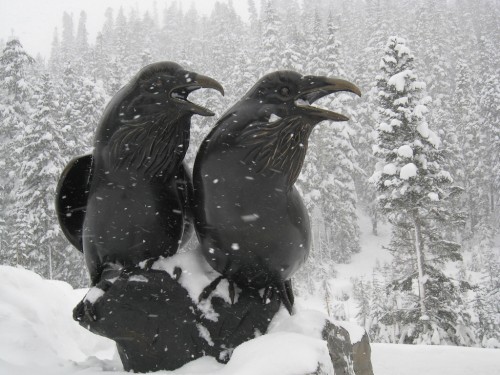
As part of our “Nature of Writing” series, John Marzluff & Tony Angell present Gifts of the Crow: How Perception, Emotion and Thought Allow Smart Birds to Behave Like Humans June 18 at 7pm in the Readings Gallery at Village Books in Bellingham; Free!
A soaring bald eagle and playful river otters at the North Cascades Environmental Learning Center on Diablo Lake. Watchful ravens standing sentinel at the entrance to the Mt. Baker Ski Area. A parliament of owls gathered on the Whatcom Community College campus.
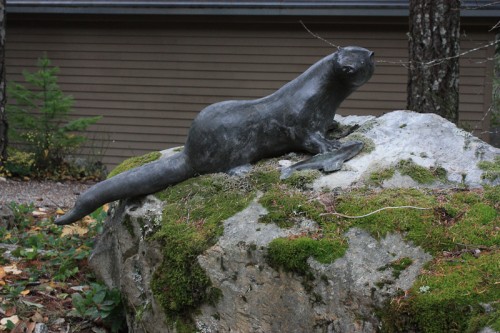
Whatcom County is fortunate to have Tony Angell’s inspired avian sculptures adding beauty and grace to our local land- and cityscapes. These iconic pieces join noteworthy installations at the Seattle Aquarium, Woodland Park Zoo, Tacoma Art Museum, the Sleeping Lady Resort, and countless public libraries and schools throughout Washington—not to mention Cornell University and the renowned Museum of Wildlife Art in Jackson, Wyo.
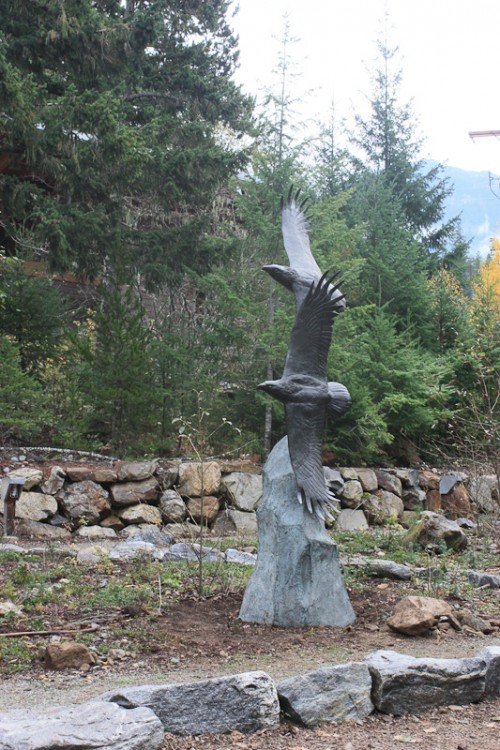
Under the influence of his powerful hands—Angell is a former University of Washington shot-putter, discus-thrower and arm-wrestling champ—blocks of granite, onyx, marble, chlorite, limestone and serpentine reveal sinuous shapes of Pacific Northwest wildlife, often birds, but also orcas, turtles, salmon, salamanders and other denizens of our region.
“(While) I do address matters of detail and I am generally sensitive to accuracy of my detail, I don’t put a lot of it into my work,” Angell once explained in a radio interview. “What I am trying to do is emphasize the spiritual side of the subject.”
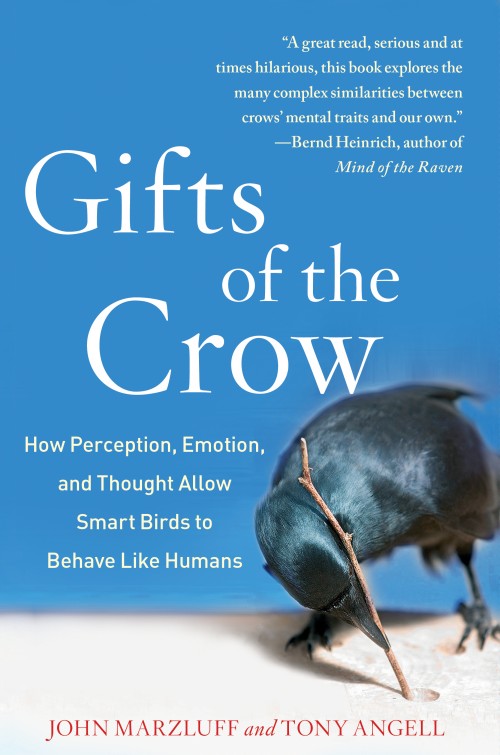
Angell is also a gifted wildlife illustrator, and has just published Gifts of the Crow: How Perception, Emotion, and Thought Allow Smart Birds to Behave Like Humans, a follow-up to 2005’s In the Company of Crows and Ravens. Both volumes are a collaboration with John Marzluff, professor at the School of Environmental and Forest Sciences at the University of Washington, bringing together the artistry and field naturalist skills of Angell with the scientific expertise of Marzluff to examine the fascinating, uncanny world of corvid behavior.
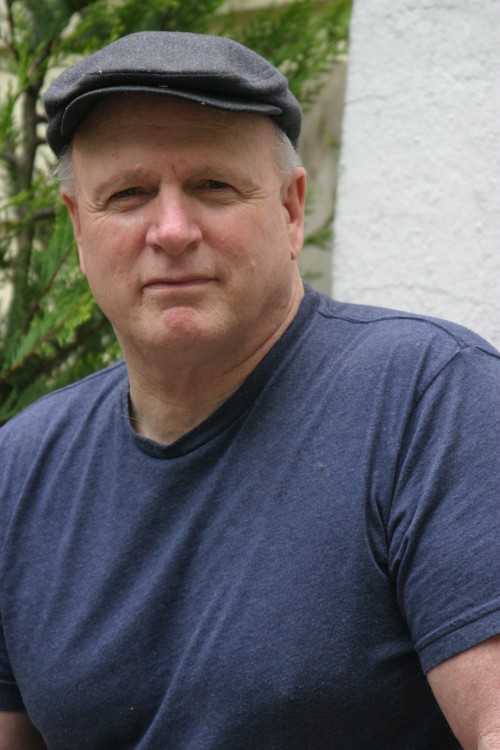
Raised in the dry topography of Southern California, Angell fell in love with the natural world at a young age while hiking the Santa Monica Mountains, birdwatching, keeping snakes and reptiles in his room, even studying taxidermy so he could learn the inner workings of animals. Moving to Washington as a teenager, his intimate relationship with wildlife continued as he rehabilitated owls, trained falcons and hawks and built a rustic cabin on Lopez Island where he observed the marine mammals and migratory birds of the Salish Sea.
Alongside his prolific career as an artist, Angell is an elected Fellow of the National Sculpture Society and an active board member of Washington’s chapter of the Nature Conservancy, and he served as Director of Environmental Education for the State of Washington for 30 years.
“Angell’s work is known for how it combines elegance and strength,” an art critic for the Seattle Times wrote, “but it is most remarkable in how it represents the convergence of his personality, passion and life… Seattle novelist Ivan Doig describes him as ‘a rushing river threatening to break its banks.’”
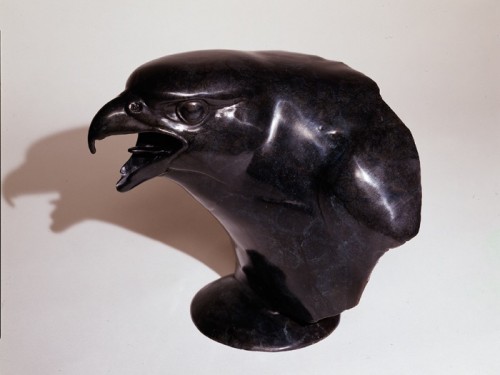
A generous selection of his sculptural and illustrative work was collected alongside essays and commentary in Puget Sound Through An Artist’s Eye, published in 2009 by University of Washington Press. He described the book as “an invitation to enjoy the world artistically, and in a way, inspire other people to be artists. Because there are plenty of people out there who can use art as their avenue of discovery and action and commitment and enjoyment of living here. Once you do that, you’ve invested in what’s here.”
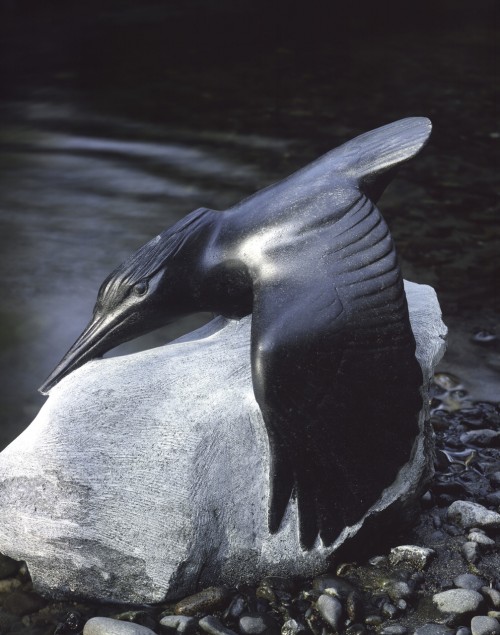
But why is Angell so invested in corvidae family?
“When a raven was given to me many years ago, it soon became my most important emissary from the larger world of nature,” he explains. “My friend the raven “gifted” me a richer understanding of Nature in general and animal behavior in particular. They have given us fuel for our myths, song, literature, music, dance, painting, and sculpture over tens of thousands of years — gifts beyond measure. Now science is just beginning to discover other gifts they have to offer us.”

“Sometimes we hear people say, there are only two ways of looking at a crow, “you either love them or hate them,” he continues. “From our book I would hope that these two attitudinal poles might be replaced with a more middle ground of admiration for these special birds. I would hope that the readers, while seeing these species as a revealing subject for scientific discovery, would also consider them to be exceptional sources of subtle beauty and provocative emotional possibilities. Should one apply his or her artistic mind to the corvids, the aesthetic gifts will be great.”
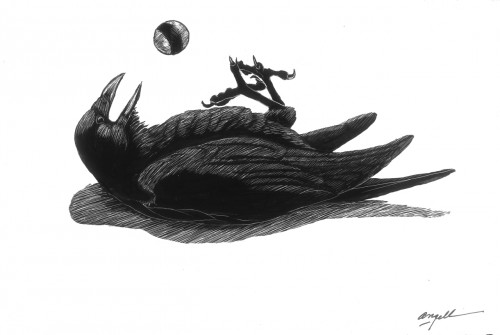
Originally published in the Cascadia Weekly, June 13, 2012.


Mr Angell,
I have visited your Ravens at Mt Baker for several years. They are spectacular and have been a constant inspiration. I’m a photographer and have many pictures of your sculpture. I’ve been fascinated with any designs of Ravens including Bill Reid’s Raven & the First Men @ UBC. Congratulations and I hope to visit other works of yours sometime soon.
Best Regards,
Joel Kifer
Hello is this Raven sculpture still near Mount Baker
Yes the ravens are at the entrance to the ski area!